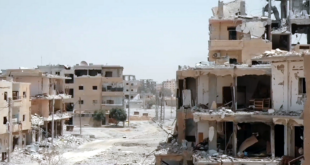In the face of hybrid threats from Belarus and Russia, the Polish government has been responding with increased militarisation and belligerent language about the defence of the eastern border from illegal migrants. But how much of this is a genuine effort to deal with the problem and how much electioneering?
On August 30, three Polish ministers showed up in Podlasie, one of the Polish regions bordering Belarus, to give statements to the press but seemingly without a concrete reason to be there.
“Usnarz Gorny is a symbolic place when it comes to the hybrid attack that was started two years ago, whose purpose was the destabilisation of Poland,” Defence Minister Mariusz Blaszczak said that day.
Usnarz Gorny is the locality on the border where, in August 2021, 32 Afghan migrants were kept by Polish authorities for weeks in a field, without access to asylum procedures, shelter or medicines, a moment which brought the border crisis to the attention of the Polish public.
“That hybrid attack preceded the attack on Ukraine and there is no doubt that these actions were agreed with the Kremlin,” Blaszczak continued. “We’re having to deal with an attempt to attack the free world by an aggressive regime which wants to build the Russian Empire in Europe.”
“This border wall is the answer of the Polish Republic, of the PiS government, to Russian imperialism,” Foreign Minister Zbigniew Rau, standing next to Blaszczak, said. “This wall is no doubt the eastern shield of NATO.”
Rau was referring to the 5.5-metre-tall wall that Poland has built on 186 kilometres of its border with Belarus in an attempt to prevent the migrants from getting across.
“Without it, Poland would become a ‘second Lampedusa’,” Rau claimed, referring to the Italian island that has just seen more than 8,000 migrants arrive over the past three days. “Except it would be full of migrants out of whom many have received military training. More than 90 per cent of the migrants are recruited by Russian secret services. They fly to Russia and then are brought here using conventional means.”
The ministers’ speeches on that day are telling for the overall approach of the Polish government when it comes to security on its eastern border with Belarus. While the governing Law and Justice (PiS) party’s description of Russia’s imperial goals and hybrid strategies is hardly disputed, the effectiveness of focusing on combatting illegal migration as a way to defend Poland is questionable and driven, critics say, more by electoral goals than a security strategy.
Real concerns
The border with Belarus has been a key front line in Russia’s hybrid war with the West at least since 2021, when Belarusian dictator Aleksandr Lukashenko opened a new migration route to Europe via Minsk and his country’s borders with the Baltic States and Poland. In the north-east, Poland also directly borders the Russian exclave of Kaliningrad, where Russia is suspected of locatingnuclear-capable missiles.
Those realities were there at the start of Russia’s war against Ukraine, but since then a few more reasons for concern have arisen.
The most significant incident to have happened in Poland since the start of the full-scale invasion of Ukraine was the missile explosion at Przewodow, near the border with Ukraine, in November 2022, when two citizens were killed. (US investigators concluded this was likely an air defence missile fired by the Ukrainians in response to a Russian attack.)
In spring, a horse rider in a forest in north-central Poland found parts of what was later established to be a Russian KH-55 missile, which is potentially capable of carrying a nuclear warhead. Little is known to date about the origin of the missile, with the Polish government – which media reported knew about the existence of the object on Polish territory for months but was unable to locate it – mostly keeping information under wrap.
Then in June, Russian President Vladimir Putin said he had sent a first batch of tactical nuclear weapons to Belarus. Security experts have debated multiple scenarios of how these could potentially be used (including in Ukraine), but there is no doubt their new location in Belarus has increased nervousness in Poland and the Baltic states.
Then, after a failed mutiny in Russia, thousands of Wagner fighters were reported to have moved to Belarus in July, following negotiations between Lukashenko, Putin and the late Wagner leader Yevgeny Prigozhin. Since the latter’s demise, most of these Wagner fighters have reportedly left for Africa.
Most recently, Belarus flew two military helicopters into Polish airspace in early August.
Those developments on the ground were accompanied by bellicose rhetoric from Russia and Belarus. Among the most flagrant examples were Putin’s suggestions in late July that Poland poses a threat to Belarus (Putin promised to defend the latter if Poland “unleashes aggression” against Minsk) or that it is trying to annex Ukrainian territory. For his part, Lukashenko infamously jokedabout the Wagner fighters’ desire “to go on a trip to Warsaw or Rzeszow”.
Feigning action
Since the war in Ukraine started, Poland has ramped up investment in its military with the aim of building Europe’s largest land forces to act as a deterrent or in case of a conventional attack.
But other threats – such as nuclear or hybrid provocations – are simply harder to anticipate and prepare for. The government’s blunders over the KH-55 missile as well as the delay in admitting that Belarusian helicopters had indeed entered Polish airspace have also weakened its credibility in dealing with these more ambiguous threats.
In this context, and faced with a close general election on October 15, PiS has chosen a main way to feign effectiveness: focusing attention on the alleged danger posed by migrants trying to enter Poland via Belarus and its efforts to seal off the so-called “Eastern Borders Route”.
The importance of this issue can be seen in the government’s decision to organise a referendum together with the general election, in which two of the questions are about migration: the government will ask Poles whether they want the border wall to be torn down and whether they agree to “compulsory relocation mechanisms of the EU”. This refers to the EU’s New Pact on Migration and Asylum that includes a “solidarity mechanism”, which, PiS claims, would force Poland to accept thousands of migrants from Africa and the Middle East, even though it explicitly states that members can choose what to offer: relocation; capacity-building and other support; or a financial contribution.
In the video announcing the latter question, Polish Prime Minister Mateusz Morawiecki suggested that migrants have caused the creation of “neighbourhoods of terror” in Western European cities, where rape, murder and destruction is widespread.
https://youtube.com/watch?v=mes6iwzJoU0%3Fsi%3DjnDwSx-ep4oxSdUo
Rau’s statement at Usnarz Gorny also contained examples of the PiS government distorting the truth about migrants to suit its agenda: there is no evidence, for example, that “most migrants have received military training” or that they were recruited by the Russian security services.
After the Belarusian helicopters entered Polish airspace in August, Defence Minister Mariusz Blaszczak announced that the government would send an additional 10,000 troops to the border area to support the Polish Border Guard.
Interestingly, despite the hyped sense of threat, not much has actually changed in the migration patterns on the eastern border since late 2021. As reported previously by BIRN, since 2021 the route has shifted partially, as most migrants now first fly to Moscow, before heading by cars to Minsk. More recently, they have started to arrive at other locations outside Russia, including Kazakhstan, as BIRN has identified on Telegram channels where smugglers advertise their services.
And while the number of attempted entries this year has so far reached 21,000, indicating an increase compared to last year, the total is far from 2021 figures, when, in October alone, there were 17,000 attempted entries.
The situation on this border could, in fact, be described as stable, with the numbers rising from spring as the weather improved and smugglers professionalising this new variation of the Eastern Borders Route via Moscow.
Experts says the only new threat, theoretically, is the one proposed by the PiS government that Wagner fighters might sneak across the border amongst the migrants.
“The government claims that Wagner fighters could enter Poland together with the migrants and arrange an attack on Polish territory, but the fact is that there are still a lot of Russian citizens around in Poland who could potentially be acting for Russia and conduct such attacks if the Kremlin wanted – there is no need for Wagner fighters to do that,” Mikolaj Pawlak, a sociologist specialising in migration at Warsaw University, tells BIRN.
The sociologist says the risk of nuclear or other attacks on the territory of Poland is ever-present, but “it’s much easier for the government to focus the public’s attention on very concrete, material things, such as migrants on the border and the wall, especially since they know that since 2015 scaremongering about migrants brings votes.”
“While there is certainly no coordination between Warsaw and Minsk, I would say the Polish government is quite happy to be provoked by Belarus in this case – it suits their electoral campaign,” Pawlak adds.
Marta Gorczynska, a migration lawyer working for the Helsinki Committee, points out that if there were proper procedures in place at this border, a Wagner fighter attempting to enter Poland together with migrants would presumably be recognised by Polish security officials.
“What is happening right now is that the government claims it is super-effective in defending the border, but in fact they are actually hiding the truth,” Gorczynska claims. “The truth is that people keep entering Poland, without being admitted to any regular administrative procedures, which involve being identified, verified and then entering asylum or return procedures. People keep coming in without being checked and then make their way to Germany.”
Pawlak agrees that respecting migrants’ basic rights would make sense not only from a human rights perspective but also from a security one.
“These are dramatically small numbers of migrants trying to enter Europe via this route,” he says. “Poland is absolutely able to put all those asking for asylum in camps until they are checked properly, which we can do since we are connected to EU and NATO databases.”
“This would be the most effective way to neutralise Lukashenko’s instrumentalisation of migrants,” he concludes.
 Eurasia Press & News
Eurasia Press & News




